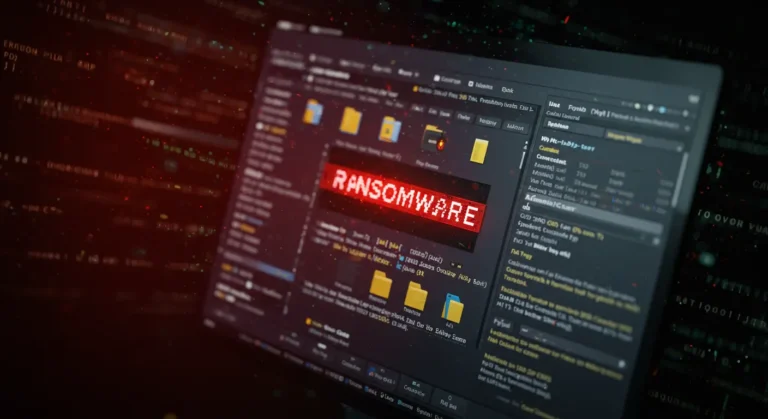Snapshot: Why the first 60 minutes now decide your outcome
Ransomware risk in the U.S. remains elevated and fast-moving:
- U.S. organizations made up ~51.5% of global ransomware victims, with ~93 new victims posted per week on leak sites, per GuidePoint’s GRIT 2025 report.
- Attack timelines have collapsed—average breakout from first foothold to lateral movement is now measured in minutes (median ~48 minutes; fastest ~51 seconds), underscoring the need for decisive early actions.
- Ransomware crews continue to iterate. CISA’s 2025 advisories (e.g., Play, Medusa) document evolving TTPs and reinforce immediate containment, hardening, and recovery disciplines.
- Adversaries are shipping EDR-kill tooling capable of disabling top-tier endpoint products, raising the stakes for tamper protection and layered controls.
Active groups are targeting MSPs and mid-market with double-extortion, intensifying third-party risk for every downstream client.
The U.S. regulatory clock is ticking faster
If you’re public or operate critical infrastructure, reporting timelines are now part of the first-hour calculus:
- SEC cybersecurity disclosure rule: disclose material incidents on Form 8-K within four business days of determining materiality; governance and risk management disclosure is annual. Your first-hour triage influences materiality calls.
- CIRCIA (proposed rule) for critical infrastructure: 72-hour incident reporting and 24-hour ransom payment reporting to CISA (NPRM published; final rule pending—prepare now).
Bottom line: Speed, accuracy, and documentation in Hour One aren’t just best practice—they’re risk, legal, and reputation hygiene.
Your first-hour ransomware response plan (battle-tested)
Goal: Contain blast radius, preserve evidence, protect people and operations, and keep your regulatory and contractual obligations on track.
Minute 0–15: Confirm, contain, communicate
- Declare the incident & time-stamp it. Start an incident log (who/what/when).
- Isolate affected systems—don’t power them off. Pull network cables/disable Wi-Fi/VLAN quarantine to stop propagation while preserving volatile evidence.
- Block attacker access quickly. Disable compromised accounts, enforce password resets for suspected identities, and elevate MFA requirements (expect MFA-fatigue tactics).
- Activate the comms plan. Spin up an out-of-band channel (e.g., clean collaboration room + voice bridge). Name a single incident lead and scribe.
- Engage your IR partner & counsel. Preserve privilege on sensitive deliberations (materiality, ransom, law enforcement).
Minute 15–30: Stabilize and scope
- Safeguard backups and DR assets. Immediately isolate backup repositories (object lock/immutability) and verify last known-good restore points are intact; attackers target backups early.
- Identify the variant & indicators. Hash notes, file paths, ransom notes, network beacons—cross-check with CISA #StopRansomware advisories for IOCs and mitigations (Play, Medusa, etc.).
- Contain known bad. Block C2 domains/IPs, disable scheduled tasks and malicious services, and enable EDR tamper protection organization-wide given rising EDR-kill techniques.
Minute 30–60: Prepare for decisions & recovery
- Decide critical business priorities. What services must be restored first? Establish minimum viable operations (MVO) and the crown-jewel list.
- Begin forensics capture. Memory images on key systems, server and identity logs (IdP, VPN, PAM), firewall/NetFlow, and hypervisor snapshots where viable.
- Regulatory triage. Start a materiality assessment (for SEC registrants) and determine CIRCIA applicability (critical infrastructure). Draft report placeholders so you can file within required windows if triggered.
- Law enforcement & insurer touchpoints. Coordinate with counsel on FBI engagement and notify cyber insurance per policy conditions.
Pre-restore validation. Before any restoration, confirm eradication steps and cleanroom rebuild plan to avoid reinfection.
Don’t do these in Hour One (costly mistakes)
- Don’t wipe or reimage immediately. You lose evidence essential for variant attribution, dwell-time analysis, and legal decisions.
- Don’t chat on compromised systems. Assume the adversary is reading your mail/chat.
- Don’t pay or negotiate from production networks. Use counsel-directed channels; consider OFAC/sanctions exposure and insurer constraints (assess with legal). (General legal best practice; consult counsel.)
Don’t restore from backups you haven’t validated. Attackers love latent persistence.
Expert commentary: What changed in 2025—and what it means
- Identity is the new perimeter under stress. With breakout times down and valid-credential abuse up, first-hour actions must prioritize account containment and MFA hardening, not just host isolation.
- Tooling interference is normalized. The spread of EDR-killers means your plan should assume partial control loss; design tamper protection + kernel driver allowlists as defaults and verify continuously.
- Threat groups iterate quickly. CISA’s mid-2025 updates on Play and Medusa confirm living-off-the-land and multi-stage exfiltration; you need network-level containment and exfil detection in Hour One.
- Regulatory timelines raise the bar on documentation. SEC and (pending) CIRCIA windows force earlier clarity on scope, impact, and decision logs. Your scribe is now a control, not a convenience.
Predictive insights: The next 12 months
- RaaS specialization will surge against MSP supply chains, amplifying downstream impact; expect more “one-to-many” first hours.
- AI-assisted intrusion ops will compress breakout times further while defenders increasingly adopt AI-augmented detection and triage. Prepare automation guardrails now.
- Backup sabotage + data theft will remain the dominant pressure tactic. Assume immutability + isolation are prerequisites to any credible ransomware response plan.
- U.S. reporting norms will tighten as CIRCIA moves toward finalization, pushing organizations to operationalize 72/24-hour workflows well in advance.
The first-hour checklist (print and pin)
- Incident declared; clock started; scribe assigned
- Out-of-band comms stood up; roles confirmed
- Affected hosts isolated (not powered off)
- Identity lockdown: disable suspected accounts, heighten MFA, rotate creds
- Backups isolated/locked; last good point verified
- Variant/IOCs identified; blocks pushed to email, endpoints, network
- Forensic collection started (memory, logs, snapshots)
- Regulatory triage initiated (SEC materiality/CIRCIA scope)
- Law enforcement/insurer touchpoints coordinated through counsel
- Cleanroom restore plan drafted; don’t restore until validated
How we help (and why now)
If your organization is treating ransomware readiness as an IT task, you’re already behind.
We bring a proven ransomware response framework, regulatory expertise, and AI-powered defense capabilities—ready to integrate directly into your security operations.
Whether you need a fully outsourced Incident Response partner or a long-term cybersecurity contract, our team ensures you can act decisively in the first hour, recover with confidence, and meet every compliance clock that’s ticking.
📞 Let’s secure your first hour before attackers take it from you — Contact our Cybersecurity Experts Today info@diginatives.io.






